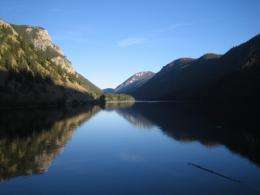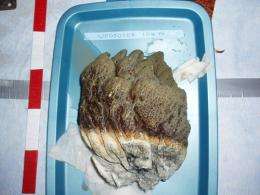Microbial Life in Mars Analog Lakes

The first microbiological survey of Mars analog lakes in Western Australia is offering new evidence of the diverse life that could have once thrived on Mars.
The types of environments that exist on Mars and whether or not they are conducive to sustain life are still big mysteries for scientists who study the red planet. Until scientists can study Mars environments first-hand, the next best option is to study Earth environment “analogs” thought to closely resemble Mars.
In a recent study published in the journal Astrobiology, scientists conducted the first microbiological survey of Mars analog lakes in Western Australia. These natural acid saline lakes, the authors say, could be similar in some respects to past Martian environments. They also may represent what conditions were like on Earth billions of years ago.
“From the data that is coming back, it seems that there are portions of Mars that probably had acidic, saline waters,” says lead author Melanie Mormile of the Department of Biological Sciences at Missouri University of Science and Technology. “If there ever was life on Mars, that life would have to have the mechanisms that would thrive in hypersaline environments.”
Many Mars analog studies are taking place all around the world. For example, scientists from the SETI (Search for Extraterrestrial Intelligence) Institute are exploring high-altitude lakes in the Andes mountain range in Bolivia and Chile. The Pavilion Lake Research Project - a joint effort between NASA and the Canadian Space Agency - is an analog lake project to study modern microbialites in Pavilion Lake in British Columbia, Canada.
“Analog studies of any sort are really the key and useful for getting fundamental information about the capabilities of life,” says Allyson Brady of McMaster University and a scientist with the Pavilion Lake Project. “Earth is the best study we have at the moment, the most accessible study.”
Most analog studies, according to Mormile, focus on conditions that have a neutral pH or one that is slightly alkaline. The focus on natural acidic lakes, therefore, makes Mormile’s new study unique.

During the Austral winter of 2005, Mormile and her colleagues traveled to Australia and collected water samples from 11 lakes that varied in pH from very acidic to alkaline. Their first goal was to get an overall picture of the types of microbial life in these environments.
To analyze the diversity of the microbial communities, the team had to develop what are called “clone libraries,” or gene banks of DNA sequences. The libraries were developed using samples from four of the 11 lakes: Twin Lake East, Dead Kangaroo Lake, King Lake and Pink Lake. The pH of these lakes ranged from acidic (2.7) to moderately alkaline (8.2).
The water samples brought back to the laboratory were centrifuged, and DNA was extracted from the resulting pellet of organic material. The team then used the polymerase chain reaction (PCR) method to amplify the genetic material. Mormile says the amplification was carried out on the 16S rRNA gene.
“The reason why those particular genes are used is because they are pretty conserved among all living organisms,” explains Mormile. “We’re trying to get some kind of an idea of the evolutionary background to understand who is more closely related to whom.”
The scientists used their clone libraries to help identify the DNA sequences extracted from their samples, to determine what sort of organisms the DNA came from.
The team looked at the percent similarity - in other words, how similar a 16S rRNA gene in their sample was to a known organism’s gene. If the similarity was above 97 percent, the gene from the sample was probably the same species as the known organism. If the similarity was below 97 percent, the sample probably represented a new species. If the similarity was below 93 percent, the sample was probably a new genus.
From samples taken at the four lakes, a total of 84 gene sequences were analyzed. Of that number, eight could represent new species and 35 could be new genera. From this analysis, the scientists concluded that the diversity of the microbial communities relates directly to the diversity of the water geochemistry from one lake to the other. The lakes in which the water was chemically more complex (containing more minerals) had a greater variety of microbial life.
“A lot of analog research, to some extent, is (trying to) understand the environments that bacteria live in,” says Brady. “Bacteria can inhabit practically anywhere and everywhere. The range of habitats that bacteria can live in is amazing.”

One day in the not-too-distant future, scientists will be able to study rock and soil samples obtained directly from Mars. NASA’s long-term Mars exploration program envisions launching a Mars sample return mission by 2020. Until such a mission is launched and successfully returns back to Earth, analog studies offer the crucial preparation scientists need to study Martian soil samples.
“If you actually get samples from Mars, how would you know what to look for?” asks Brady. “What kinds of evidence would you look for that showed there was life in the past? These analog studies give us some fundamental information to address those questions.”
The fact that an array of microorganisms can survive, and sometimes thrive, in extreme environments with low pH, highly saline, metal-rich waters exposed to high levels of UV radiation gives scientists hope in finding traces of life on Mars.
Source: Astrobio.net, by Anuradha K. Herath


















